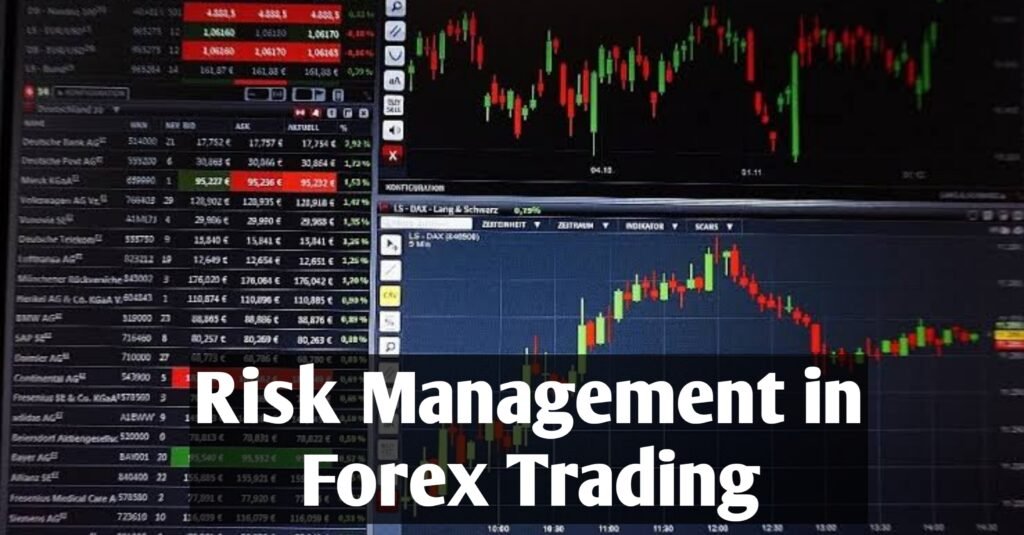Risk management is a crucial aspect of successful forex trading. By developing a solid risk management strategy, traders can protect their trading capital, minimize losses, and increase their long-term profitability. In this lesson, we will explore the importance of risk management in the forex market and provide practical tips on how to develop an effective strategy.
Why Risk Management in the Forex Market is
-
Preserve Trading Capital:
-
Forex trading involves financial risk, and preserving capital is paramount to ensure sustainability in the market.I
-
mplementing risk management techniques helps protect against significant losses, ensuring that traders can continue trading even during unfavorable market conditions.
-
-
Minimize Losses:
-
Losses are an inherent part of trading, but effective risk management can help minimize their impact.
-
By limiting the size of potential losses, traders can maintain a positive risk-to-reward ratio and recover more quickly from losing trades.
-
-
Emotional Control:
-
Sound risk management practices promote emotional control and reduce the psychological stress associated with trading.
-
Knowing that potential losses are limited and under control allows traders to make rational decisions based on analysis rather than emotions.
-
How to Develop a Solid Risk Management Strategy:
-
Position Sizing:
-
Position sizing refers to determining the appropriate amount of capital to allocate to each trade.
-
Traders should consider their account size, risk tolerance, and the specific characteristics of each trade when determining position sizes.
-
A common approach is to risk a small percentage, such as 1-2%, of the trading capital on each trade to ensure proper diversification.
-
-
Setting Stop-Loss Orders:
-
Stop-loss orders are predetermined levels at which traders exit a trade to limit potential losses.
-
Placing stop-loss orders helps define the maximum acceptable loss on a trade and ensures that traders exit positions before losses escalate.
-
Stop-loss levels should be set based on technical analysis, support and resistance levels, or other indicators relevant to the trading strategy.
-
-
Risk-to-Reward Ratios:
-
A risk-to-reward ratio assesses the potential gain of a trade relative to the potential loss.
-
Traders should aim for a favorable risk-to-reward ratio, such as 1:2 or higher, where the potential profit is at least double the potential loss.
-
By maintaining a positive risk-to-reward ratio, traders can achieve profitability even with a lower win rate.
-
-
Diversification:
-
Diversification involves spreading trading capital across different currency pairs, strategies, and market conditions.
-
By diversifying their trades, traders can reduce the risk of concentrated exposure to a single currency or market event.
-
Diversification can be achieved through proper portfolio allocation and not overconcentrating trades in a single position.
-
Examples of Good Risk Management Strategies in the Forex Market:
-
Risk Limits: Set a maximum percentage of trading capital to risk on any given trade or in a specific trading session to avoid excessive losses.
-
Trailing Stop-Loss Orders: Adjust stop-loss levels as the trade moves in favor of the trader to lock in profits and limit potential losses.
-
Risk Assessment: Conduct a thorough analysis of market conditions, economic events, and technical indicators before entering a trade to assess potential risks accurately.
-
Regular Evaluation: Continuously monitor and evaluate the performance of trading
Conclusion
Developing a solid risk management strategy is crucial for forex traders to protect their trading capital and increase their long-term profitability. By implementing position sizing techniques, setting stop-loss orders, and managing risk-to-reward ratios, traders can minimize losses and maintain emotional control during trading. Additionally, diversifying trades and regularly evaluating risk management practices contribute to a well-rounded risk management strategy. Prioritizing risk management allows traders to navigate the forex market with confidence, preserve their capital, and improve their chances of success.

